Twin Cities Picture Show
2007 by the Minnesota Historical Society. All rights reserved. No part of this book may be used or reproduced in any manner whatsoever without written permission except in the case of brief quotations embodied in critical articles and reviews. For information, write to the Minnesota Historical Society Press, 345 Kellogg Blvd. W., St. Paul, MN 55102-1906.
www.mhspress.org
The Minnesota Historical Society Press is a member of the Association of American University Presses.
Manufactured in the United States of America
10 9 8 7 6 5 4 3 2 1
 The paper used in this publication meets the minimum requirements of the American National Standard for Information SciencesPermanence for Printed Library Materials, ANSI Z39.481984.
The paper used in this publication meets the minimum requirements of the American National Standard for Information SciencesPermanence for Printed Library Materials, ANSI Z39.481984.
International Standard Book Number
ISBN 13: 978-0-87351-595-5 (cloth)
ISBN 10: 0-87351-595-1 (cloth)
Ebook ISBN: 978-0-87351-755-3
LIBRARY OF CONGRESS CATALOGING-IN-PUBLICATION DATA
Kenney, Dave, 1961
Twin Cities picture show : a century of moviegoing / Dave Kenney.
p. cm.
Includes bibliographical references and index.
ISBN-13: 978-0-87351-595-5 (cloth : alk. paper)
ISBN-10: 0-87351-595-1 (cloth : alk. paper)
1. Motion picturesMinnesotaMinneapolisHistory.
2. Motion picturesMinnesotaSaint PaulHistory.
3. Motion picture theatersMinnesotaMinneapolisHistory.
4. Motion picture theatersMinnesotaSaint PaulHistory.
I. Title.
PN1993.5.U753K46 2007
791.4309776579dc22
2007022585
For Helen and Grace
Remember the Cottage View
Publication of this book is supported, in part, by a gift from Blythe Brenden in honor of her grandfather Ted Mann.
Contents
Feature Presentations
Preface
 t was early December 2006, and the old movie theater that had served as one of the primary settings of my adolescence was dead. The Har Mar Theater in Roseville was not all that ancient, actually. It had opened in 1970, so it was just thirty-six years oldmiddle-aged by cinema standards. But a new fourteen-screen megaplex with stadium seating, attentive staff, and good coffee was opening that afternoon at Rosedale Center, less than a mile away. The Har Mar was no longer needed. I had meant to be on hand for its final show the night before, but I forgot to show up. Now I was standing outside the old cinema, running my fingers along its pebble-encrusted walls, looking up at the jumble of nonsensical letters splayed across its marquee. The Har Mar was where, during a junior high school field trip showing of Franco Zeffirellis Romeo and Juliet, I had almostalmostsummoned the courage to slip my arm around a girls shoulder for the first time. It was where a group of my friends and I, hopelessly uncool, had sung along with John Travolta and Olivia Newton-John during the musical finale of Grease. (Youre the one that I want. O, o, oo, honey.) I tried to calculate how many movies I had seen there over the years, but the number eluded me. Twenty? Fifty? One hundred? More? It had never occurred to me to keep track.
t was early December 2006, and the old movie theater that had served as one of the primary settings of my adolescence was dead. The Har Mar Theater in Roseville was not all that ancient, actually. It had opened in 1970, so it was just thirty-six years oldmiddle-aged by cinema standards. But a new fourteen-screen megaplex with stadium seating, attentive staff, and good coffee was opening that afternoon at Rosedale Center, less than a mile away. The Har Mar was no longer needed. I had meant to be on hand for its final show the night before, but I forgot to show up. Now I was standing outside the old cinema, running my fingers along its pebble-encrusted walls, looking up at the jumble of nonsensical letters splayed across its marquee. The Har Mar was where, during a junior high school field trip showing of Franco Zeffirellis Romeo and Juliet, I had almostalmostsummoned the courage to slip my arm around a girls shoulder for the first time. It was where a group of my friends and I, hopelessly uncool, had sung along with John Travolta and Olivia Newton-John during the musical finale of Grease. (Youre the one that I want. O, o, oo, honey.) I tried to calculate how many movies I had seen there over the years, but the number eluded me. Twenty? Fifty? One hundred? More? It had never occurred to me to keep track.
One of the theaters glass entrance doors was propped open, so I let myself in. The scene inside was unsettling. The weird, curvilinear fiberglass box office was stripped down and abandoned. Large cardboard packing boxes were scattered about the lobby. The concession stands display cases were bare, candyless. A young woman stepped out from behind one of the lobbys gold lam walls and eyed me warily. I introduced myself and explained that I was writing a book about moviegoing and movie theaters in the Twin Cities. She smiled and nodded, evidently relieved that I was not a scavenger come to pick the Har Mars corpse. She told me that workers already were removing the seats from the auditoriums, that no one had shown any interest in taking over the theater from her employer, AMC, that she had turned down an offer to work at the new Rosedale megaplex and was transferring instead to a theater in Texas. I thanked her for indulging my curiosity and left.
As I walked back to my car, my mind shuffled through some of my most vivid moviegoing memories. The earliest one was of my mother taking me to see Mary Poppins. I couldnt place the theater, but I figured it must have been the Southtown in Bloomingtonor maybe the Parkway in South Minneapolis. I remembered watching Yours, Mine, and Ours at the Maple Leaf Drive-in while simultaneously battling my sisters for the most comfortable spot in my parents station wagon (the one with the mosquito-repelling window screens). There was my first James Bond movie, Live and Let Die, at the Orpheum in downtown St. Paul and the tedious afternoon I spent watching The Emigrants under the faux stars of the Uptown on Grand Avenue. I recalled sneaking into my first R-rated film, Chinatown, at the Roseville 4, with its clueless ushers; settling into the claustrophobic screening room of the recently twinned Grandview for a twisted double-bill of King of Hearts and Bambi Meets Godzilla; and taking my girlfriend, Lisa, to see Alien at the Plaza in Maplewood after being assured by a cocksure coworker that it would scare her into my awaiting arms. (He forgot to mention that it might frighten me more than it would Lisa.) And then there was my last trip to the Rose Drive-in, with a gaggle of high school friends. We absentmindedly watched what I declared the worst movie I had ever seen, a disaster flick called City on Fire. As it turned out, City on Fire was the last feature presentation ever to play at the Rose.
There is something about watching a motion picture in a movie theater that lodges in the brain. How else can you explain the ability to recall when, where, and with whom you watched a supremely forgettable film called Hawmps? (It had something to do with camels.) Often when I mention to someone that Im writing a book about moviegoing, that person responds by regaling me with recollections of a certain film or a certain theater or both. Before you know it, were filling in each others moth-eaten memories and laughing at each others favorite movie lines. Its then that I realize what a shared experience moviegoing really is.
We Twin Citians are not unique in our attachment to motion pictures, of course. Moviegoing is a diversion that we hold in common with millions of people around the world. But few communities between New York and Los Angeles can match our hometowns rich history with the movies. We count among our number several nationally known showmen, including Moses Finkelstein, Isaac Ruben, and Ted Mann. Weve spent countless hours in the darkened auditoriums of our favorite theaterssome of which rank as world-class architectural gems. Some of us have railed against films that offended our sensibilities, while others of us have defended the people who sought to show them. Weve even served as a test market for some of the biggest motion pictures of all time.
We may not be Hollywood, but our lives are rich in movies.
The Har Mar may be closed now, but who knows, maybe someone will resurrect it. Stranger things have happened. Other old movie theaters like the State, Orpheum, and Pantages in Minneapolis and the World (now the Fitzgerald) in St. Paul have found new life recently. The Grandview, Highland, Riverview, Uptown, and Heights still show movies. The Terrace, Hollywood, and Palace have managed to avoid the wrecking ball and, if were lucky, will experience a kinder fate than did the Radio City, Paramount, and Cooper. All of themthe ones still with us and the ones relegated to memoryare places worth remembering. Theyre where weve shared a common interest called the movies.


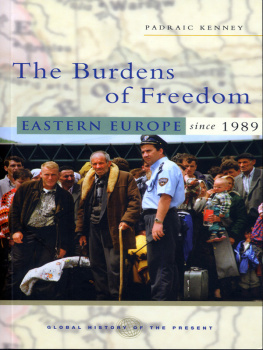



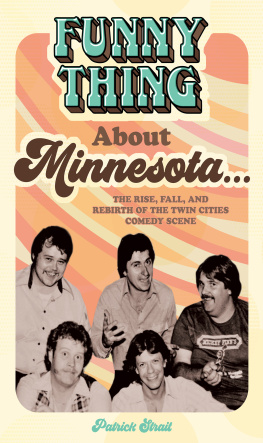

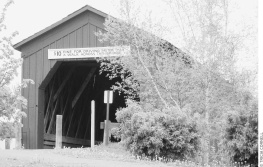

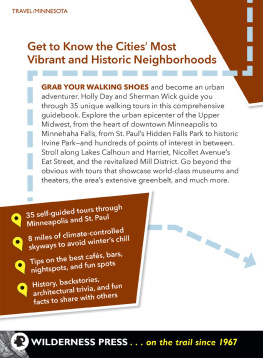

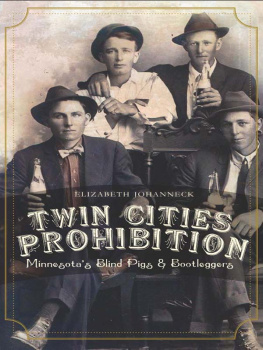
 The paper used in this publication meets the minimum requirements of the American National Standard for Information SciencesPermanence for Printed Library Materials, ANSI Z39.481984.
The paper used in this publication meets the minimum requirements of the American National Standard for Information SciencesPermanence for Printed Library Materials, ANSI Z39.481984. t was early December 2006, and the old movie theater that had served as one of the primary settings of my adolescence was dead. The Har Mar Theater in Roseville was not all that ancient, actually. It had opened in 1970, so it was just thirty-six years oldmiddle-aged by cinema standards. But a new fourteen-screen megaplex with stadium seating, attentive staff, and good coffee was opening that afternoon at Rosedale Center, less than a mile away. The Har Mar was no longer needed. I had meant to be on hand for its final show the night before, but I forgot to show up. Now I was standing outside the old cinema, running my fingers along its pebble-encrusted walls, looking up at the jumble of nonsensical letters splayed across its marquee. The Har Mar was where, during a junior high school field trip showing of Franco Zeffirellis Romeo and Juliet, I had almostalmostsummoned the courage to slip my arm around a girls shoulder for the first time. It was where a group of my friends and I, hopelessly uncool, had sung along with John Travolta and Olivia Newton-John during the musical finale of Grease. (Youre the one that I want. O, o, oo, honey.) I tried to calculate how many movies I had seen there over the years, but the number eluded me. Twenty? Fifty? One hundred? More? It had never occurred to me to keep track.
t was early December 2006, and the old movie theater that had served as one of the primary settings of my adolescence was dead. The Har Mar Theater in Roseville was not all that ancient, actually. It had opened in 1970, so it was just thirty-six years oldmiddle-aged by cinema standards. But a new fourteen-screen megaplex with stadium seating, attentive staff, and good coffee was opening that afternoon at Rosedale Center, less than a mile away. The Har Mar was no longer needed. I had meant to be on hand for its final show the night before, but I forgot to show up. Now I was standing outside the old cinema, running my fingers along its pebble-encrusted walls, looking up at the jumble of nonsensical letters splayed across its marquee. The Har Mar was where, during a junior high school field trip showing of Franco Zeffirellis Romeo and Juliet, I had almostalmostsummoned the courage to slip my arm around a girls shoulder for the first time. It was where a group of my friends and I, hopelessly uncool, had sung along with John Travolta and Olivia Newton-John during the musical finale of Grease. (Youre the one that I want. O, o, oo, honey.) I tried to calculate how many movies I had seen there over the years, but the number eluded me. Twenty? Fifty? One hundred? More? It had never occurred to me to keep track.